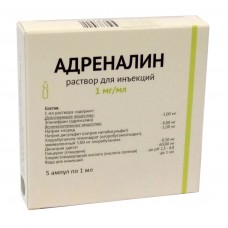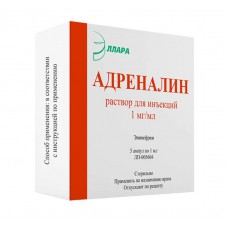Adreno - and simpatomimetics (alpha, beta)
The agonists include drugs that are adrenergic agonists. Depending on the affinity for the receptors they are divided into alpha-, beta-, alpha - or beta-agonists with the appropriate index subtype (alpha1-, ALPHA2 -, etc.). Sympathomimetics (ephedrine, etc.) have an indirect effect, enhancing the release of norepinephrine from the endings of adrenergic nerves (and inhibit its reuptake) that invokes the appropriate (adrenomimetic) effects. The core of the majority adrenomimetic drugs is beta-phenylethylamine. The presence of Oh-groups in the 3 and 4 positions of benzene ring (epinephrine, norepinephrine) impedes the passage of GAB (no effect on the Central nervous system with a strong peripheral Pressor effect). The effect of agonists manifested by narrowing of most blood vessels, increased contractions of the myocardium, increased heart rate, increased automaticity and improved conductivity in the heart muscle, enlargement of the bronchial tubes. Activation of adrenergic receptors leads to increased intracellular concentration of calcium or camp. The mechanism of action of sympathomimetics is largely determined by their ability to displace catecholamines from their neuronal depots.
Features of the chemical structure of sympathomimetics — ephedrine, and amphetamine (absence of one or two Oh-groups in the phenolic ring) contribute to the increase in bioavailability after ingestion and increase the duration of action (not inactivated by COMT and MAO). In addition, it increases the penetration of the Central nervous system than the Central effects (reduced sense of fatigue, need for sleep, increased efficiency). On the effects of peripheral sympathomimetic drugs similar to adrenaline. Of the side effects of their development is characterized by tremor, excitement, insomnia.
Noteworthy special sympathomimetics, which include a local anesthetic cocaine and tyramine, which are the product of metabolic tyrosine in the body and in high concentrations in some foods (cheese, wine, etc.). These preparations are introduced parenterally, exhibit sympathomimetic activity (i.e., narrow vessels, raise HELL, etc.) associated with the inhibition of noradrenaline reuptake (cocaine) or the release of stocks from the depot catecholamines (tyramine).
The main applications of adrenergic and sympathomimetic agents — cardiovascular lesions (shock, including anaphylaxis, collapse, cardiac arrest, hypotension) and respiratory (asthma) disease.


